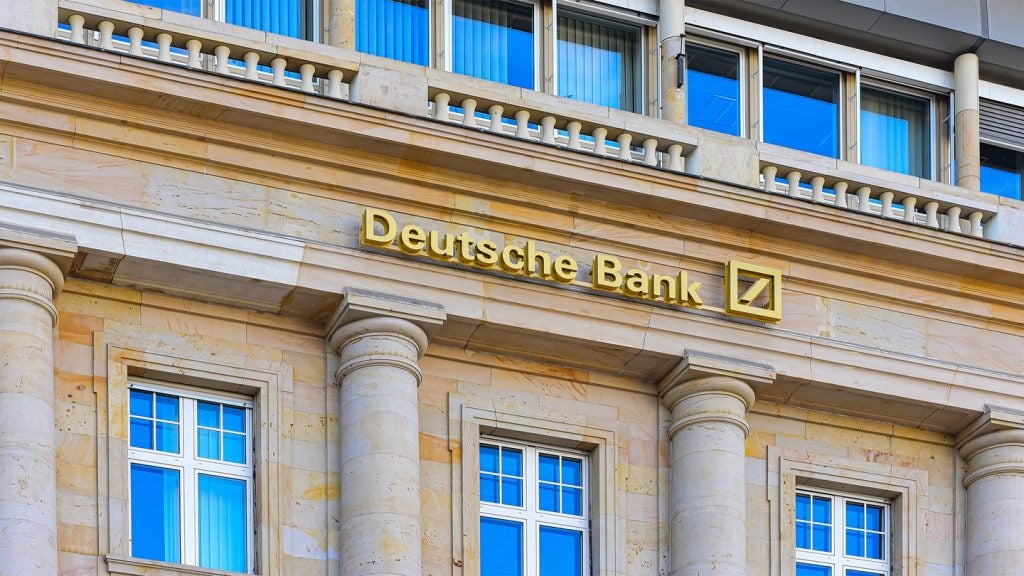Last year was terrible for many banks in the US – but
not for all. One bank, New Jersey-based Hudson City Bancorp, saw
its profits increase by 50 percent. While it only has 127 branches,
the bank, now the largest thrift in the US, is benefitting from a
new online platform that is drawing in deposits from across the
country.
In a market where the government has unveiled a circa $2
trillion rescue package for financial services companies, one would
not think that many banks had had a successful year in 2008. A few,
however, did relatively well (see RBI 606). One did very
well: Hudson City Bancorp.
Now one of the largest banks in the US – and, with the demise of
Washington Mutual, the largest thrift, or savings-and-loan,
institution – Hudson City is still dwarfed by the giants of the US
market such as Bank of America, Chase and Wells Fargo. It only has
127 branches and 116 ATMs compared to 6,139 branches and 18,685
ATMs at Bank of America, for instance.
But the New Jersey-based Hudson City has been
garnering praise for its performance last year: annual group profit
shot up 50 percent, from $296 million in 2007 to $446 million,
while total assets increased 21 percent to $52 billion.
Hudson City was the best performing bank in
the S&P 500 index in 2008 with a total return of 9.02
percent.
The influential US media group Forbes voted
the bank its Best Managed Bank of the Year, for instance, stating:
“One theory that has not held up, especially in 2008, is that
financial services are a safe place to invest during a downturn. We
have only identified one Platinum 400 bank, Hudson City Bancorp,
that met our screening criteria. [We have] selected this outfit as
the best-managed company in the banking industry.”
How well do you really know your competitors?
Access the most comprehensive Company Profiles on the market, powered by GlobalData. Save hours of research. Gain competitive edge.

Thank you!
Your download email will arrive shortly
Not ready to buy yet? Download a free sample
We are confident about the unique quality of our Company Profiles. However, we want you to make the most beneficial decision for your business, so we offer a free sample that you can download by submitting the below form
By GlobalDataRonald Hermance, chairman, president and CEO
of Hudson City, seems perfectly calm and not at all surprised at
the bank’s results.
“This is our year to shine,” Hermance said.
“While 2008 was a year of unprecedented turbulence across the
financial services industry, Hudson City Bancorp not only survived,
but thrived during one of the worst economic downturns in decades.
2008 marks our 10th straight year of record earnings.”
Hudson City reported a fourth-quarter profit
of $124.3 million, up 60 percent from the previous year as both
loans and deposits grew by nearly 22 percent year-over-year. Per
share profit increased to 25 cents a share from 16 cents.
But perhaps the most outstanding aspect of
Hudson City’s performance is its cost-income ratio: a mere 20.84
percent in 2008, vastly lower than all other mainstream banks in
both the US and other countries (see table below).
Its efficiency ratio was 19.91 percent for the
fourth quarter of 2008.
|
Fundamentals |
|||
|
Hudson City Bancorp – |
|||
|
Q408 |
FY08 |
% change FY07 |
|
|
Net income ($m) |
124.3 |
445.6 |
50.6 |
|
Net interest income |
260.5 |
942 |
45.6 |
|
Deposits ($bn) |
− |
18.46 |
21.8 |
|
Net loans ($bn) |
− |
29.44 |
21.7 |
|
Total liabilities ($bn) |
− |
49.2 |
23.6 |
|
Total assets ($bn) |
− |
54.2 |
21.9 |
|
Provisions for loan losses |
9 |
19.5 |
306 |
|
Number of full-time |
− |
1,451 |
11 |
|
Ratio of NPL to performing |
− |
0.74 |
41 bps (1) |
|
Return on average assets |
0.94 |
0.91 |
− |
|
Return on average equity |
10.24 |
9.36 |
− |
|
Net interest spread (%) |
1.67 |
1.57 |
− |
|
Net interest margin (%) |
2.02 |
1.96 |
− |
|
Cost-income ratio (%) |
19.91 |
20.84 |
− |
|
(1) Basis points Source: Hudson City |
|||
The largest thrift in the US
Despite being relatively small,
Hudson has grown rapidly over the past three years. It has
increased its branch network by 41 percent since January 2006 to
127 branches: 93 in New Jersey, 25 in New York and 9 in
Connecticut.
It describes itself as the largest
thrift based on a market capitalisation of $9 billion (as at end-of
2008) and assets of $52 billion. It has benefitted from more than
20 percent asset CAGR over the past 10 years.
Far from avoiding mortgage lending, Hudson
City specialises in jumbo mortgages, while its aggressively priced
certificates of deposit (CDs) have lured a steady stream of
consumer deposits as money flows from higher risk vehicles toward
CDs.
In addition, a national, internet-based
deposit-gathering programme has brought in more than $50 million
since being quietly launched at the end of November.
Hermance stated: “In the fourth quarter of
2008, we grew deposits by $1.18 billion, capping a full year of
deposit growth of $3.31 billion, as depositors looked for
competitive rates and a bank with a strong capital position.
“We introduced our internet deposit product in
December 2008 and although we have not yet fully implemented our
marketing plan for this product, we have already taken in over $52
million of deposits through this channel.
“We are very excited about the prospects of
increasing deposit funding nationally through the internet with the
same competitive rates and brand our customers enjoy in our
physical branch network. We believe that our retail branch network
coupled with our internet deposit products will further enhance the
value of our franchise.”
As at the end of December last year, time
deposits scheduled to mature within one year totalled $12.48
billion with an average cost of 3.61 percent.

A strong mortgage portfolio
While Hudson City added $9 million
to its reserve against future possible loan losses in the fourth
quarter, up from a $2 million provision in the year-earlier period,
its mortgage portfolio is considerably stronger than many of its
competitors. The bank’s charge-off rate was a relatively low $1.8
million in the fourth quarter, though that was an increase from
$109,000 in the fourth quarter of 2007.
In fact, Hudson City actually increased
mortgage originations in its core markets. Deposits rose about 7
percent from the third quarter and about 22 percent from a year
earlier, to $18.5 billion. In terms of lending, it did not get
involved in subprime or so-called option ARM loans (which so
catastrophically toppled Wachovia).
Hudson City makes two primary types of loans –
30-year, fixed-rate conforming and jumbos – only in its core
markets, underwrites them by hand, and closely monitors their
performance. Of nearly 82,000 mortgage loans on its books in
November, only 388 were 90 days or more past-due.
The bank’s relentless focus on efficiency
enables it to deliver significant values to customers in the form
of higher deposit yields, competitive mortgage rates, lower fees,
and a straightforward, streamlined loan process that has helped it
steer clear of subprime, adjustable-rate mortgages, and other
products at the heart of the housing meltdown.
About 96 percent of its deposits are in
interest-bearing products. Among the recent offerings: 4 percent on
a five-month CD, 3.5 percent on a money-market account and a
checking account that pays 3 percent. It has branches in nine of
the 50 wealthiest counties in the country, and averages $140
million in deposits per-outlet.
According to Hermance, the strategy going
forward is to focus on internally generated growth, increase
mortgage originations and purchases, and pursue branch expansion in
existing and adjacent markets with similar demographics.
It will also mean focusing on deposit growth –
and maintaining a strict focus on efficiency as it looks to keep
its title as the most efficient bank in the US. A “simple,
consistent operating model”, as Hermance stated.
“These certainly are difficult economic times.
At the very least, 2008 will be remembered as a year that saw [the
US] economy fall into a deep recession and a year that witnessed
unprecedented turmoil and changes in the financial marketplace.
“Despite these unpleasant events, Hudson City
is reporting record results. We continue to stand apart from our
competitors as we never engaged in risky lending practices,” he
added.
Small banks have suffered less
Hudson City is not the only bright
spot in the US banking market. Many of the country’s smaller banks
have suffered far less than the major players – there are 8,430
banks in total in the country.
As the ranks of money centre banks continue to
thin, it’s clear that a stable of well-capitalised, risk-averse
smaller banks is capitalising amid the chaos.
In fact, the small banks are having their day
in the sun, as deposits increase and customers defect from large
banks. At tiny Happy State Bank, in Happy Texas, eight new branches
this year came from an acquisition.
The seller? Once-mighty Citigroup, unloading
some of its unwanted branches in Texas to focus on its core
operations as it works to shore up its balance sheet.
|
Efficiency |
||
|
18 selected US banking groups |
||
|
Bank |
Cost-income ratio (%) |
Nos of branches |
|
Hudson City Bancorp |
20.84 |
127 |
|
US Bank |
47.4 |
2,791 |
|
BB&T |
52.1 |
1,511 |
|
Wells Fargo |
53.7 |
5,897 |
|
M&T Bank |
54.4 |
700 |
|
Bank of America |
56.1 |
6,139 |
|
Huntington Bancshares |
57 |
600 |
|
Capital One (1) |
59.7 |
738 |
|
PNC Financial |
62 |
2,589 |
|
SunTrust Banks |
63.9 |
1,692 |
|
Comerica |
64.7 |
439 |
|
JPMorgan Chase |
65 |
5,474 |
|
Zions Bancorporation |
67.5 |
525 |
|
TD Bank (2) |
69.8 |
1,062 |
|
Fifth Third Bancorp |
70.4 |
1,307 |
|
KeyCorp |
93.5 |
986 |
|
Citi (2) |
115.9 |
1,015 |
|
Regions Financial |
156 |
1,900 |
|
Notes: (1) Cost-income is for Q408; |
||







